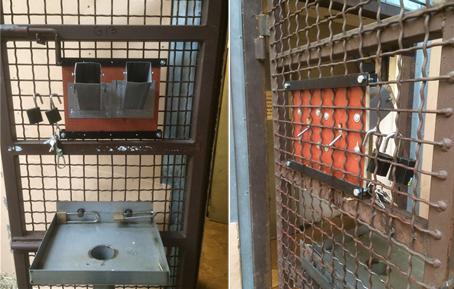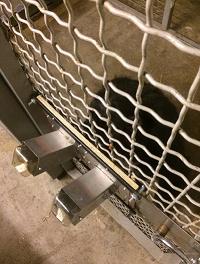
► Borås Zoo in Sweden and included
►Three West African Chimpanzees (Pan troglodytes verus), one male, Jonathan, and two females, Pippi and Kankan.
►A two-bottle preference test of short duration (1 min) was used to determine the taste preference thresholds of the chimpanzees. Three different drinking stations were built and placed in three different places of the enclosure, one for each test subject. The reason for this was to avoid distraction and competition between the individuals.
►The drinking stations were constructed in a way so that the chimpanzees were not able to see the content in the bottles (Fig 3.).

In each trial the chimpanzees were simultaneously presented with two graduated bottles of 700 mL with metal drinking spouts for 1 minute. One bottle contained tap water and the other bottle contained a solution of one of the sweet-tasting substances diluted with tap water at a given concentration.
The lowest concentration of a sweet-tasting substance that the animals preferred over the bottle with tap water was considered as the taste preference threshold value. The concentrations were not presented in a strict descending order but instead presented pseudo-randomized. The reason for this was to keep the animals motivated and willing to participate in the tests. Also, the bottle containing a sweet-tasting solution was not placed on the same side in every trial, but rather in a pseudo-randomized sequence on either the left or the right side, in order to avoid a preference for a certain side.l.
Responsible for this page:
Director of undergraduate studies Biology
Last updated:
